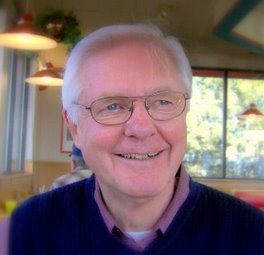Why are youi spending so much time on the topic: “Living in Community” Burwick. Cuz
1 That is where I currently find myself and this is foreign terriroty to me. I need to know about it as much a possible.
2.You may not be living in community now, but you know not what tomorrow brings. It could be economic disaster where you are forced to share living expenses with someone else; or,
3. You have an adult som / daughter moving back in with you, or…
Let’s examine Biblical communities
Background for the first community living demonstrated in the Book of Acts chapter 2; 1 On the day of Pentecost all the believers were meeting together in one place. 2 Suddenly, there was a sound from heaven like the roaring of a mighty windstorm, and it filled the house where they were sitting. 3 Then, what looked like flames or tongues of fire appeared and settled on each of them. 4 And everyone present was filled with the Holy Spirit and began speaking in other languages, as the Holy Spirit gave them this ability.
Peter then preaches a convicting sermon with the results recorded in verse 41: Those who believed what Peter said were baptized and added to the church that day—about 3,000 in all.
The Believers Form a Community
42 All the believers devoted themselves to the apostles’ teaching, and to fellowship, and to sharing in meals (including the Lord’s Supper, and to prayer.
43 A deep sense of awe came over them all, and the apostles performed many miraculous signs and wonders. 44 And all the believers met together in one place and shared everything they had. 45 They sold their property and possessions and shared the money with those in need. 46 They worshiped together at the Temple each day, met in homes for the Lord’s Supper, and shared their meals with great joy and generosity[j]—47 all the while praising God and enjoying the goodwill of all the people. And each day the Lord added to their fellowship those who were being saved.
Notice the focus: apostles teaching, fellowship, sharing meals, Lord’s Supper, prayer, met together in one place and shared everything they had (even selling all they had to share with those in need.) all the while praising God and enjoying the goodwill of all the people. The outpouring of the Spirit produced not just momentary enthusiasm but four continuing commitments: to learn, to care, to fellowship and to worship. And each day the Lord added to their fellowship those who were being saved.
32 All the believers were united in heart and mind. And they felt that what they owned was not their own, so they shared everything they had. 31 After this prayer, the meeting place shook, and they were all filled with the Holy Spirit. Then they preached the word of God with boldness.
Luke, the author of Acts, portrays prayer as integral to the church's life (compare 4:24; 6:4; 12:5; 13:3; 20:36). Prayer, then preaching.
It appears that this “FirstChurch of Acts” is the model for most if not all groups with a religious theme - the Dominicans and Franciscans and others. Even weird groups like Jim Jones and his koolaid killing cult had dimensions of this church in Acts.
Characteristics of Community Living in First Church of Acts that can apply to living in community now are:
1 Significance of the group over the individual. Selfish agendas applied with deceit, as in the case of Ananias and Sapphira, met with death. In like manner, selfishness “kills” relational harmony and unity.
2. The focal point was obvious: “More and more there were being added to the Lord those who believed [those who acknowledged Jesus as their Savior and devoted themselves to Him joined and gathered with them], crowds both of men and of women,” For a community to be successful, a common focus is necessary. For the First “Church of Acts” spotlight was evangelism.
3. The mission was clear: a devotion to the apostles’ teaching, to fellowship, to sharing in meals (including the Lord’s Supper, and to prayer.
4. Selfless sensitivity: (even selling all they had to share with those in need.)
5. Intentionality to unity: 32 All the believers were united in heart and mind.
We csn observe today’s growing churchs manifesting the pattern of the first church: celebration, joining in large gatherings for worship and instruction, and small group, meeting in home groups for fellowship and nurture.
Gary wrote about some Biblical relationships which tended to point to community.
Cain and Abel in field together, first example of living in community as was common with farming/ranching/home crafts in US through first half of last century.
Celebration and purification Job and offspring, while flocks caused them to range, they did spend family time together when possible 4 Job’s sons would take turns preparing feasts in their homes, and they would also invite their three sisters to celebrate with them. 5 When these celebrations ended—sometimes after several days—Job would purify his children. He would get up early in the morning and offer a burnt offering for each of them. For Job said to himself, “Perhaps my children have sinned and have cursed God in their hearts.” This was Job’s regular practice 4
Issac took Rebekah into his mother’s bed, indication of sharing quarters between generations
Nomadic community of Jacob and sons, Jacob and sons communed together, stayed close and acted as community for common welfare; tending flocks, going to Egypt for food, protective of family before Joseph
Jesus in Peter’s home where Peter’s mother lived
Disciples in Barnabas’s home with extended family
These are all examples of the different types of living in community displayed in Scripture.
Friday, January 28, 2011
Subscribe to:
Post Comments (Atom)



No comments:
Post a Comment